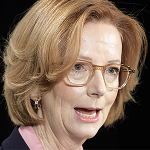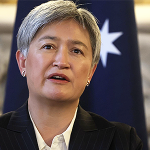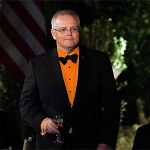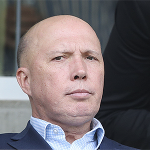
by GRAHAM YOUNG – THERE is more care than productivity in this budget. Literally, “care” is one of the most frequently used words.
In last week’s budget, the word received 20 mentions, while “productivity” had just four.

- The four times the Treasurer mentioned productivity, it was in the context of measures that were productivity-destroying.
- Paying more for the same, or working less, by definition, lowers productivity.
- Education is a good idea, but giving it away isn’t.
Yet, if Australia is to pull itself out of the hole it has dug itself into, increasing productivity is the most important thing.
While Treasurer Jim Chalmers seeks to forge a link between himself and the “Placido Domingo” of treasurers, Paul Keating, it takes more than growing up in an outer-suburban working-class electorate to make a great treasurer.
SOCIAL
By the same token, it takes more than being brought up in social housing, the child of a single mother, to make a great prime minister.
From the beginning, Keating was a reformer, reform made more urgent by the difficult economic circumstances of the time. He was the hardman of his government, second only to the finance minister, Peter Walsh.
In a series of text messages from two weekends ago between Keating and Chalmers, where the Treasurer seeks to forge the connection, Keating said he had no need of focus groups.
But it would appear that focus groups, the ones that crafted the policies taken to the last election, and the ones who undoubtedly cast their eye over this budget while it was being fabricated, are designing policy, not the real needs of the moment.
If Henry Ford had asked focus groups what they wanted, he would have bred a horse that was lighter, faster, ate less hay, and carried its own manure disposal bag instead of a rickety black vehicle with spindly wheels and a combustion engine. But thank God he didn’t.
This budget purports to be faster, lighter, more sustainable, and “caring” when the country needs a new engine with grunt and some tough love.
Tough love is something that Labor can more easily give than the Coalition because of their reputation for being more compassionate.
The treasurer once appeared to know productivity is the key. Yet, here he is in March this year, addressing the Productivity Commission’s report: “If we stay stuck on the current course … future incomes will be 40 per cent lower and the working week five per cent [two hours] longer.”
On May 10, Prime Minister Anthony Albanese told ABC’s 7.30 Report that the previous government had been in power for almost 10 years but had lost its way. It seems this one is lost after just one year.
If it had either guts or gumption, it would be doing something to fix Australia’s declining productivity performance.
It would also have produced concrete plans for dealing with Australia’s biggest financial black hole, the NDIS, kept a tight rein on welfare spending and worked out ways to get older Australians back into the workforce while stripping away impediments from business and investment.
Instead, it is adding to structural costs and cramping productivity growth.
The focus groups are cheering now, but they won’t when they experience what is around the corner.
DESTROYING
The four times the Treasurer mentioned productivity, it was in the context of measures that were, at best productivity-neutral or productivity-destroying.
But at least they were caring!
The first three times were when he dedicated $7.5b to spending on childcare, parental leave, medicines, housing and wages. But, worthy as all these things might be, the policies do not positively impact productivity.
Paying more for the same, or working less, by definition, lowers productivity unless there is some step-change in efficiency. But step-change is completely missing here.
The fourth time was about “fee-free TAFE and university places” and the Powering Australia Plan.
Education is a good idea, but giving it away isn’t. It’s not obvious why TAFE should be free when university isn’t. Or why an extension of courses in either will do more than transfer public money to the educators’ purses.
Tertiary education has become a trap for many where the institutions oversupply students for industries that don’t need them, blighting students’ hopes and loading them up with HECS debt that cramps their ability to save and invest, for example, in a house of their own.
At the same time, employers complain that the students they hire need to be retrained anyway.
So we take people out of the workforce for three years, load them up with debt, and at the end of it, they are about as useful to an employer as if they hadn’t gone to a tertiary institutions in the first place. Not all, of course, but a significant minority.
Is this supposed to enhance productivity?
Powering Australia is a policy that is guaranteed to destroy productivity. Decarbonisation is going to make us all poorer because it’s going to put the price of power up, amongst other things.
Politicians claim we’re going cheap, green and clean.
CHEAP
While their preferred wind and solar technologies might appear cheap, they raise system costs because they cannot stand alone and require expensive storage, networks and gas-fired power to complete the circuit.
The government is spending $2b on a hydrogen hub in Queensland as part of this plan. On current chemistry, green hydrogen consumes seven watts of energy for every one watt it stores.
Hardly productive!
The energy transition might be necessary, but there is no point in fudging the cost.
The government is trying to recoup some of the loss through higher taxes on mining companies.
This budget does that by adjusting the Petroleum Resource Rental Tax, a change that makes it less likely anyone will ever want to drill a Greenfields project in Australia again.
In this year of the coronation, Australia has a second sovereign – sovereign risk.
Offshore oil wells are tremendously expensive, risky and take years to pay off. Why take that risk if some government is going to retrospectively alter the terms of the deal just when you see a decent return on your income and when you know prices will dive again at some time in the future?
Australia’s most “successful” export industry this budget appears to be immigration, but this hobbles another area of government policy – housing.
We have a shortage of houses. The 400,000 migrants expected to arrive this year and the 300,000 next will make that shortage worse.
PRODUCTIVE
Traditionally, Australia has a highly productive housing sector driven mostly off the back of private owners who live in or rent out their properties.
Current government policies are tilting away from that and providing tax breaks to favour corporate “build-to-rent” operations and discourage private landlords.
That won’t produce more housing, just divert resources from efficient private landlords to less-efficient corporate ones.
It will also produce a style of housing that is only suitable for rent, robbing our housing stock of the flexibility where a renter’s house today can become a first homeowner’s tomorrow.
I appreciate the sentimental tugs of where and how you grew up and wanting to do the right thing by people. But sometimes you have to look to the future, and a more productive society is a richer one which can provide more for everyone.
“Future” was mentioned even more times than “care,” but it will be a bleak one if we can’t get the basics of growth right.PC











“From the beginning, Keating was a reformer, reform made more urgent by the difficult economic circumstances of the time. He was the hardman of his government, second only to the finance minister, Peter Walsh.”
It seems to be forgotten that the Fraser Coalition Government, Treasurer John Howard, inherited a recession from Whitlam Labor and managed it to the end just before the Hawke Labor Government was elected in 1983.
Treasurer Howard and Head of Treasury John Stone created a plan for major economic reforms, it was confirmed in the (Professor of Economics) Campbell Report. After the Hawke Labor Government was elected Stone handed the Campbell Report to Treasurer Keating with his recommendation and Prime Minister Hawke and Cabinet agreed to implement it. At that time the Lange Labour Government in New Zealand adopted Campbell Report and from 1985 the reforms process commenced.
The Union Movement here protested and stopped various reforms from proceeding, Treasurer Keating was not happy and went on ABC Television and said so. The Howard Government after 1996 completed the reforms. They also established Australian Prudential Regulatory Authority to be the government’s watch dog for banking and finance following the Labor period worst in 60 years recession that began in 1990 mainly because of the economy over heating with excessive bank lending and borrowers buying companies to strip assets, remember WA Inc?
Finance Minister Peter Walsh in the Rudd Labor Government Cabinet was the voice of reason who argued with the other three “Gang of Four” inner cabinet members that the “GFC” was unlikely to cause a recession here, at worst a very mild recession, because of the strong positions inherited from the Howard Government, Treasurer Costello. But regardless Rudd Labor spent the 2007/08 Howard Government surplus and started borrowing to spend more. Their real objective was buying votes to try and secure the seats Labor won at the 2007 election that they held with very slim majorities. And they failed at the 2010 election regardless, despite bragging how they saved us from the “GFC”. And then continued borrowing and spending for the 2013 election. Lindsay Tanner resigned before that election.
“While their preferred wind and solar technologies might appear cheap, they raise system costs because they cannot stand alone and require expensive storage, networks and gas-fired power to complete the circuit.”
On average a removal and replacement “wind farm” would be necessary at least once maybe twice during the scheduled operating (written down asset value) life of a power station, normally fifty years. Well maintained a coal fired power station could operate for 70-80 years.
Power stations use the interconnected electricity grid (SA+TAS+VIC+NSW/ACT+QLD) but now a new second grid is being constructed because wind and solar sourced electricity cannot efficiently utilise the existing grid.
And wind and solar are not 24/7 base load electricity supply.